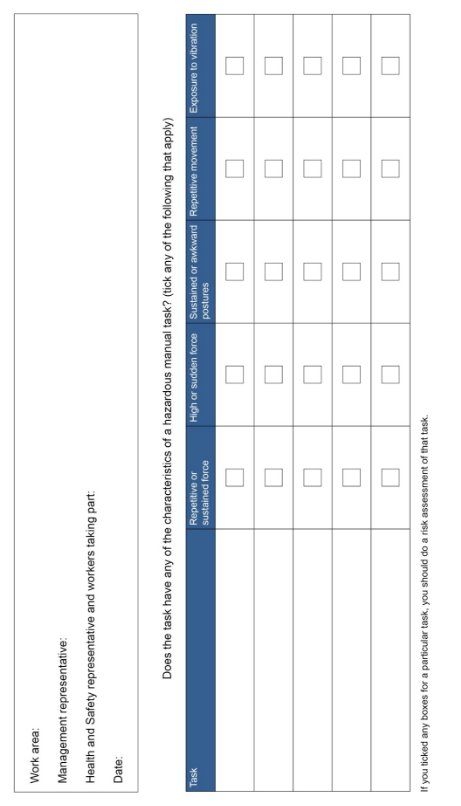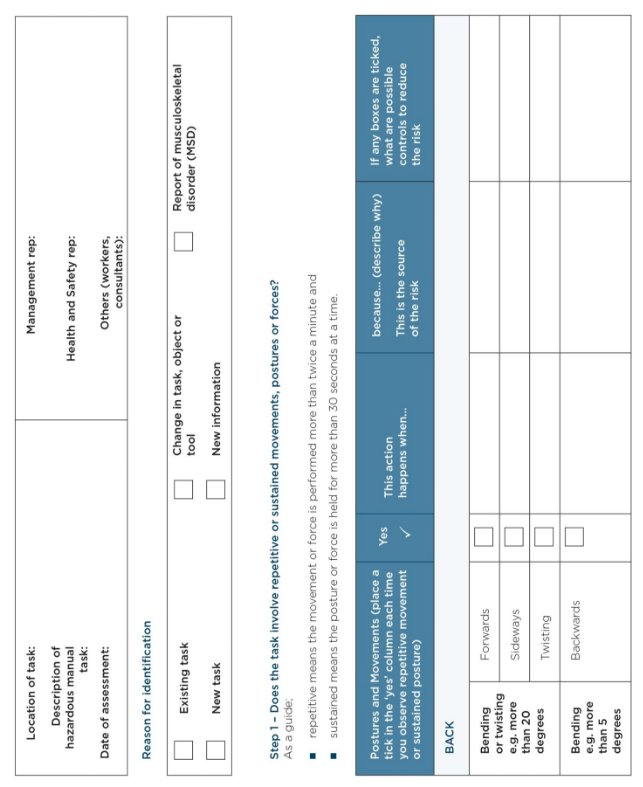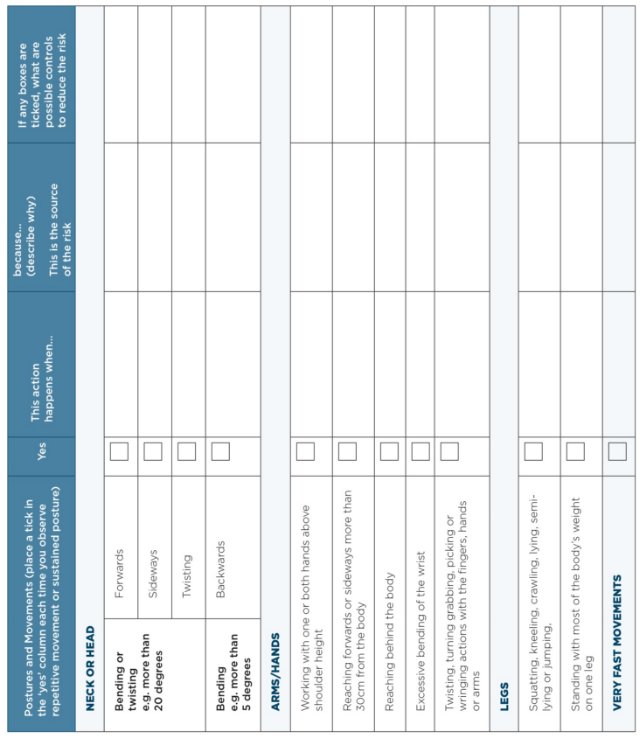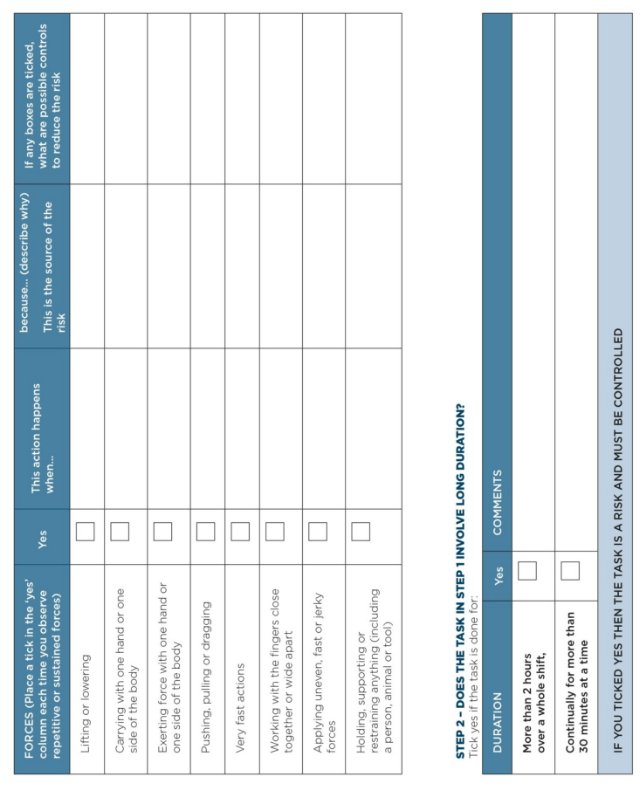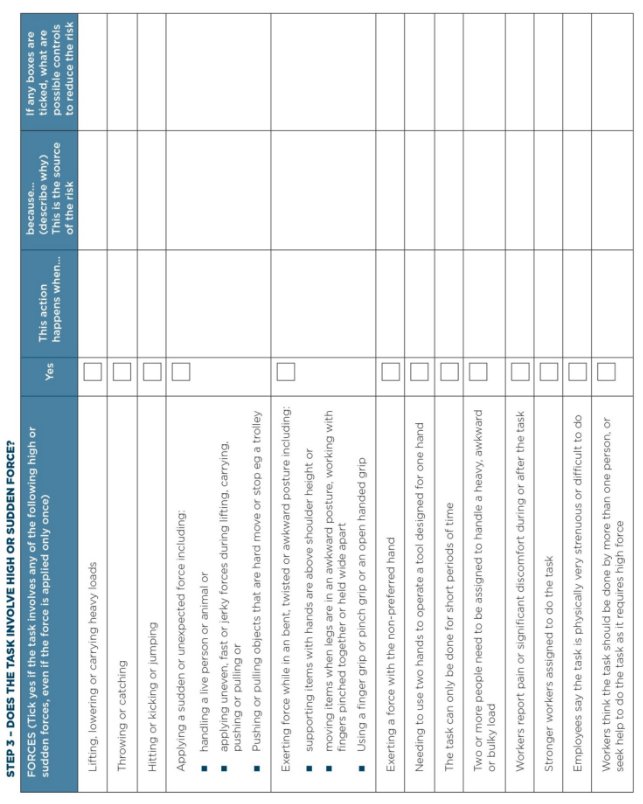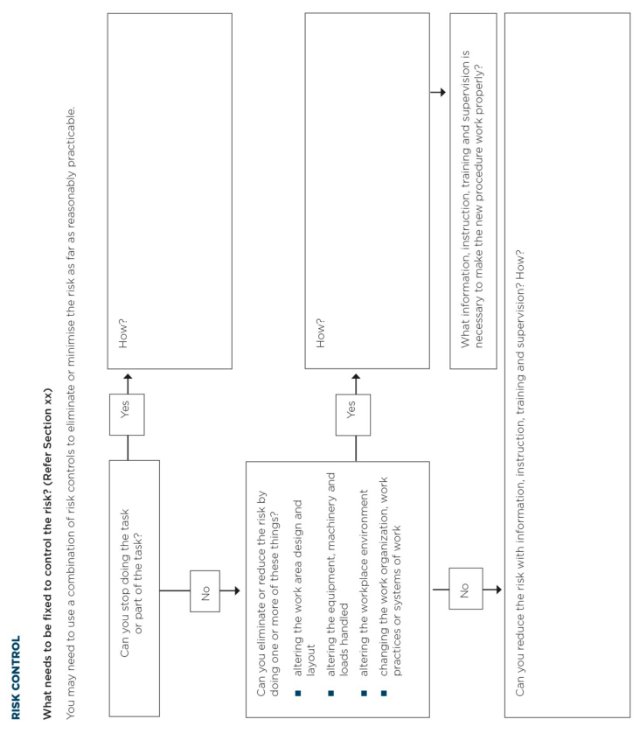HAZARDOUS MANUAL TASKS
Code of Practice
TABLE OF CONTENTS
FOREWORD
1. Introduction
1.1 What is a musculoskeletal disorder (MSD)?
1.2 What is a hazardous manual task?
1.3 Who has health and safety duties in relation to hazardous manual tasks?
1.4 What is required to manage the risk of musculoskeletal disorders?
2. Identifying hazardous manual tasks
2.1 How to identify hazardous manual tasks
2.2 Characteristics of Hazardous Manual Tasks
3. Assessing the Risks
3. Assessing the Risks
3.1 When should a risk assessment be conducted?
3.2 How to do a risk assessment for hazardous manual tasks
3.3 What are the risk factors?
3.4 What are the sources of the risk?
4. CONTROLLING THE RISKS
4.1 The hierarchy of control
4.2 Purchasing to eliminate or minimise risks
4.3 Changing the design or layout of work areas
4.4 Changing the nature, size, weight or number of items handled
4.5 Using mechanical aids
4.6 Handling people and animals
4.7 Changing the system of work
4.8 Changing the work environment
4.9 Using administrative control measures
4.10 Implementing control measures
5. Reviewing control measures
6. Role of designers, manufacturers, importers and suppliers
6.1 Designers
6.2 Manufacturers, importers and suppliers
Appendix A – The risk management process for manual tasks
Appendix b – HazaRdous manual task identification worksheeT
Appendix c – discomfort survey
Appendix D – RISK Assessment WoRKSHEET
Appendix e – Controlling MSD risks through design
Appendix F – references for further risk assessment methods
This Code of Practice on how to identify hazardous manual tasks and control the risks of workers being affected by musculoskeletal disorders is an approved code of practice under section 274 of the Work Health and Safety Act.
An approved code of practice is a practical guide to achieving the standards of health, safety and welfare required under the Work Health and Safety Act (the WHS Act) and the Work Health and Safety Regulations (the Regulations).
A code of practice applies to anyone who has a duty of care in the circumstances described in the code. In most cases, following an approved code of practice would achieve compliance with the health and safety duties in the WHS Act, in relation to the subject matter of the code. Like regulations, codes of practice deal with particular issues and do not cover all hazards or risks that may arise. The health and safety duties require duty holders to consider all risks associated with work, not only those for which regulations and codes of practice exist.
Codes of practice are admissible in court proceedings under the WHS Act and Regulations. Courts may regard a code of practice as evidence of what is known about a hazard, risk or control and may rely on the code in determining what is reasonably practicable in the circumstances to which the code relates.
Compliance with the WHS Act and Regulations may be achieved by following another method, such as a technical or an industry standard, if it provides an equivalent or higher standard of work health and safety than the code.
An inspector may refer to an approved code of practice when issuing an improvement or prohibition notice.
This Code of Practice has been developed by Safe Work Australia as a model code of practice under the Council of Australian Governments’ Inter-Governmental Agreement for Regulatory and Operational Reform in Occupational Health and Safety for adoption by the Commonwealth, state and territory governments.
A draft of this Code of Practice was released for public consultation on 7 December 2010 and was endorsed by the Workplace Relations Ministers Council on 10 August 2011.
This Code provides practical guidance to persons conducting a business or undertaking on how to manage the risk of musculoskeletal disorders arising from hazardous manual tasks in the workplace. It applies to all types of work and all workplaces where manual tasks are carried out.
This Code explains how to identify hazardous manual tasks, assess the risks of musculoskeletal disorders and eliminate or minimise those risks. This guidance is also relevant for designers, manufacturers, importers or suppliers of equipment, materials and tools used for work, as well as designers of workplaces where manual tasks are carried out.
How to use this Code of Practice
In providing guidance, the word ‘should’ is used in this Code to indicate a recommended course of action, while ‘may’ is used to indicate an optional course of action.
This Code also includes various references to provisions of the WHS Act and Regulations which set out the legal requirements. These references are not exhaustive. The words ‘must’, ‘requires’ or ‘mandatory’ indicate that a legal requirement exists and must be complied with.
Most jobs involve carrying out some type of manual task using the body to move or hold an object, people or animals. Manual tasks cover a wide range of activities including stacking shelves, working on a conveyor line and entering data into a computer.
Some manual tasks are hazardous and may cause musculoskeletal disorders. These are the most common workplace injuries across Australia.
A musculoskeletal disorder, as defined in the WHS Regulations, means an injury to, or a disease of, the musculoskeletal system, whether occurring suddenly or over time. It does not include an injury caused by crushing, entrapment (such as fractures and dislocations) or cutting resulting from the mechanical operation of plant.
MSDs may include conditions such as:
- sprains and strains of muscles, ligaments and tendons
- back injuries, including damage to the muscles, tendons, ligaments, spinal discs, nerves, joints and bones
- joint and bone injuries or degeneration, including injuries to the shoulder, elbow, wrist, hip, knee, ankle, hands and feet
- nerve injuries or compression (e.g. carpal tunnel syndrome)
- muscular and vascular disorders as a result of hand-arm vibration
- soft tissue hernias
- chronic pain.
MSDs occur in two ways:
- gradual wear and tear to joints, ligaments, muscles and inter-vertebral discs caused by repeated or continuous use of the same body parts, including static body positions
- sudden damage caused by strenuous activity, or unexpected movements such as when loads being handled move or change position suddenly.
Injuries can also occur due to a combination of these mechanisms, for example, body tissue that has been weakened by cumulative damage may be vulnerable to sudden injury by lower forces.
A hazardous manual task, as defined in the WHS Regulations, means a task that requires a person to lift, lower, push, pull, carry or otherwise move, hold or restrain any person, animal or thing involving one or more of the following:
- repetitive or sustained force
- high or sudden force
- repetitive movement
- sustained or awkward posture
- exposure to vibration.
These factors (known as characteristics of a hazardous manual task) directly stress the body and can lead to injury.
A person conducting a business or undertaking has the primary duty to ensure, so far as is reasonably practicable, that workers and other persons are not exposed to health and safety risks arising from the business or undertaking.
The WHS Regulations include specific obligations for persons conducting a business or undertaking to manage the risk of a musculoskeletal disorder associated with a hazardous manual task.
Designers, manufacturers, importers and suppliers of plant and structures that are likely to be handled or used during or as part of a manual task have an important role in eliminating or minimising the risks of MSDs, which are often associated with the poor design and layout of work areas as well as the design of equipment, tools, packaging and materials. They must ensure, so far as is reasonably practicable, that the plant or structure they design, manufacture, import or supply is without risks to health and safety (see Chapter 6 of this Code for further guidance).
Officers, such as company directors, have a duty to exercise due diligence to ensure that the business or undertaking complies with the WHS Act and Regulations. This includes taking reasonable steps to ensure that the business or undertaking has and uses appropriate resources and processes to eliminate or minimise risks that arise from hazardous manual tasks.
Workers have a duty to take reasonable care for their own health and safety and that they do not adversely affect the health and safety of other persons. Workers must comply with any reasonable instruction and cooperate with any reasonable policy or procedure relating to health and safety at the workplace.
Regulation 60: A person conducting a business or undertaking must manage risks to health and safety relating to a musculoskeletal disorder associated with a hazardous manual task.
Regulation 34-38: In order to manage risk under the WHS Regulations, a duty holder must:
- identify reasonably foreseeable hazards that could give rise to the risk
- eliminate the risk so far as is reasonably practicable
- if it is not reasonably practicable to eliminate the risk – minimise the risk so far as is reasonably practicable by implementing control measures in accordance with the hierarchy of control
- maintain the implemented control measure so that it remains effective
- review, and if necessary revise, risk control measures so as to maintain, so far as is reasonably practicable, a work environment that is without risks to health and safety.
This Code provides guidance on how to manage the risks associated with those manual tasks that have the potential to cause MSDs by following a systematic process that involves:
- identifying manual tasks that are hazardous
- if necessary, assessing the risks of MSDs associated with the hazardous manual task
- implementing suitable risk control measures
- reviewing the effectiveness of control measures.
A summary of this process in relation to manual tasks is at Appendix A. Guidance on the general risk management process is available in the Code of Practice: How to Manage Work Health and Safety Risks.
Consulting your workers
Section 47: The person conducting the business or undertaking must consult, so far as is reasonably practicable, with workers who carry out work for the business or undertaking who are (or are likely to be) directly affected by a work health and safety matter.
Section 48: If the workers are represented by a health and safety representative, the consultation must involve that representative.
Consultation involves sharing of information, giving workers a reasonable opportunity to express views and taking those views into account before making decisions on health and safety matters.
Consultation with workers and their health and safety representatives is necessary at each step of the risk management process. Your workers know which tools and activities contribute to their discomfort and may have practical suggestions or potential solutions.
It is important to consult your workers as early as possible when planning to:
- introduce new tasks or change existing tasks
- select new equipment
- refurbish, renovate or redesign existing workplaces
- carry out work in new environments.
You should also encourage your workers to report problems with manual tasks and signs of discomfort immediately so that risks can be managed before an injury occurs.
Consulting, co-operating and co-ordinating activities with other duty holders
Section 46: If more than one person has a duty in relation to the same matter, each person with the duty must, so far as is reasonably practicable, consult, co-operate and co-ordinate activities with all other persons who have a work health or safety duty in relation to the same matter.
Sometimes you may share responsibility for a health and safety matter with other business operators who are involved in the same activities or who share the same workplace. In these situations, you must exchange information to find out who is doing what and work together in a co-operative and co-ordinated way so that all risks are eliminated or minimised so far as is reasonably practicable.
For example, if a supplier visits your workplace to deliver goods, you should discuss with the supplier how the goods will be handled at your workplace, whether there are any environmental or other factors that may increase the risk (for example, using a flight of stairs while handling large boxes) and what you each will do to control any risk of injury.
Further guidance is available in the Code of Practice: Work Health and Safety Consultation, Co-operation and Co-ordination.
The first step in managing risks from carrying out manual tasks is to identify those tasks that have the potential to cause MSDs. Hazards that arise from manual tasks generally involve interaction between a worker and:
- the work tasks and how they are performed
- the tools, equipment and objects handled
- the physical work environment.
Consult your workers
Workers who perform manual tasks can provide valuable information about discomfort, muscular aches and pains that can signal potential hazards. For example, you could ask workers to identify tasks that:
- are difficult to do (or appear harder than they should be)
- are very tiring (muscle fatigue reduces work capacity)
- are awkward or dangerous (for example, difficulty controlling loads)
- cause discomfort.
A discomfort survey that may be used is at Appendix B.
Review available information
Records of workplace injuries and incidents, inspection reports and any workers compensation claims made for MSDs should be reviewed to help identify which manual tasks may cause harm. However, not all hazardous manual tasks will be associated with reported incidents, therefore it is important to gather additional information.
Information and advice about hazardous manual tasks and risks relevant to particular industries and work activities is available from regulators, industry associations, unions, technical specialists and safety consultants.
Look for trends
You may be able to identify trends or common problems from the information you collect. Trends may show that certain tasks have more characteristics that make them hazardous or that some characteristics are more common in certain jobs. Trends may also show that workers in a particular location are exposed to more hazardous manual tasks than in other areas and this could indicate a problem with the design and layout of that work area or the way work is carried out there.
These trends may help in deciding which manual tasks should be addressed as a priority.
Observe manual tasks
Hazardous manual tasks can also be identified by looking at how people actually work and focussing on their postures and movements. A manual task is hazardous if it involves any of the following characteristics (described in Section 2.2):
- repetitive or sustained force
- high or sudden force
- repetitive movement
- sustained and/or awkward posture
- exposure to vibration.
Things to look out for include:
- any changes that have resulted in new manual tasks or a changed environment
- tasks involving tools, machinery or equipment that do not work properly or are difficult to use, and
- if workers have made improvisations to tasks to avoid discomfort (such as stacking mats or flattened cartons to stand on).
The hazard identification worksheet in Appendix C may be used to record your findings.
Force is the amount of muscular effort required to perform a movement or task. Forceful muscular exertions overload muscles, tendons, joints and discs and are associated with most MSDs. |
Repetitive force - using force repeatedly over a period of time to move or support an object | Examples of repetitive force include: - lifting and stacking goods onto a pallet
- gripping and handling bricks when bricklaying (Figure 1)
- repetitively pressing components with the thumbs or other part of the hand to assemble an item
- prolonged application of therapeutic massage treatments
- removing splinting material from patients using shears.
| Figure 1 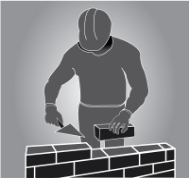
|
Sustained force - occurs when force is applied continually over a period of time. | Examples of sustained force include: - pushing or pulling a trolley around hospital wards (Figure 2)
- holding down a trigger to operate a power tool
- supporting a plaster sheet while fixing it to a ceiling
- carrying objects over long distances
- supporting, positioning or stabilising a patient’s limb during surgery or when applying splinting or casting material
| Figure 2 
|
High force – may be exerted by the back, arm or leg muscles or by the hands and fingers. High force occurs in any tasks that: - a worker describes as very demanding physically
- a worker needs help to do because of the effort it requires
- require a stronger person or two persons to do the task.
| Examples of high force include: - Lifting, lowering or carrying a heavy object
- Lifting, lowering or carrying an object that cannot be positioned close to the body
- pushing or pulling an object that is hard to move or stop
- restraining a person or animal.(Figure 3)
| Figure 3 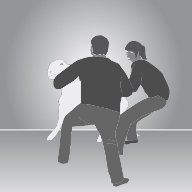
|
Examples of high force using the hands and fingers include: - using a finger-grip, a pinch-grip or an open-handed grip to handle a heavy or large load
- operating hand tools with tight squeeze grips(Figure 4)
gripping small instruments with high force, for example, a dental hygienist cleaning teeth. | Figure 4 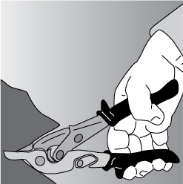
|
Sudden force – jerky or unexpected movements while handling an item or load are particularly hazardous because the body must suddenly adapt to the changing force. Tasks where force is applied suddenly and with speed also generates high force. | Examples of sudden force include:
- impact recoil of a large nail gun
- throwing or catching objects
- cutting reinforcement steel with large bolt cutters
- carrying an unbalanced or unstable load such as bagged stock feed pellets that suddenly moves (Figure 5)
- handling frightened or resistant animals
- handling patients who suddenly resist or no longer assist during the handling procedure.
| Figure 5 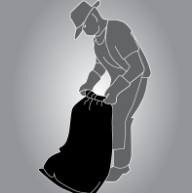
|
Movement |
Repetitive movement – using the same parts of the body to repeat similar movements over a period of time. | Examples of repetitive movement include: - painting
- lifting goods from a conveyor belt and packing them in a carton
- typing and other keyboard tasks(Figure 6)
- repeatedly reaching for and assembling components in electronics manufacturing
- using a socket and ratchet or spanner to unscrew long bolts.
| Figure 6 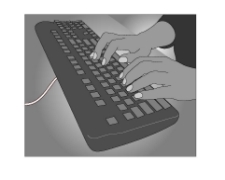
|
Posture An ideal posture is one where the trunk and head are upright and forward facing, the arms are by the side of the body, the forearms are either hanging straight or at right angles to the upper arm, and the hand is in the handshake position. Postures that are both awkward and sustained are particularly hazardous. |
Sustained posture – where part of or the whole body is kept in the same position for a prolonged period. | Examples of sustained posture include: - supporting plasterboard sheeting while it is nailed into place (Figure 7)
- continually standing with weight mainly on one leg while operating a power press with foot pedal controls.
| Figure 7 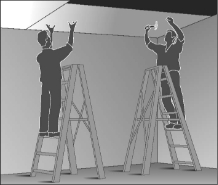
|
Awkward posture –
where any part of the body
is in an uncomfortable or unnatural position, such as: - postures that are unbalanced or asymmetrical
- postures that require extreme joint angles or bending and twisting.
| Examples of awkward posture include: - squatting while servicing plant or a vehicle
- working with arms overhead
- bending over a desk or table
- using a hand tool that causes the wrist to be bent to the side
- kneeling while trowelling concrete or laying carpet
- bending the neck or back to the side to see around bulky items pushed on a trolley. (Figure 8)
| Figure 8 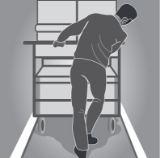
|
Vibration There are two common forms of vibration according to contact points between the body and the source: |
Whole body vibration occurs when vibration is transmitted through the whole body, usually via a supporting surface, such as a seat or the floor in heavy vehicles or machinery. This may result in lower back pain, degeneration of the lumbar vertebrae and disc herniation. | Examples of whole body vibration include: - operating mobile plant such as heavy earth moving machinery
- driving a vehicle over rough terrain.(Figure 9)
| Figure 9 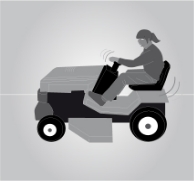
|
Hand-arm vibration occurs when vibration is transferred through a vibrating tool, steering wheel or controls in heavy machinery to the hand and arm. This can disrupt blood circulation in the hand and forearm and damage nerves and tendons. Localised vibration contributes to ‘vibration-induced white finger’ and ‘carpal tunnel syndrome’ through the gripping force needed to hold the vibrating tools (the tighter the grip, the more vibration is absorbed) and the repetitive shock loads of some tools. | Examples of hand-arm vibration include: - using impact wrenches, chainsaws, jackhammers, grinders, drills or vibrating compacting plates (Figure10-11)
- using needle guns in de-rusting metal.
| Figure 10-11 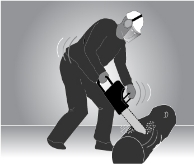

|
A risk assessment involves examining the characteristics of the hazardous manual task in more detail to assess whether the forces, movements and postures are undertaken in such a way that they give rise to the risk of MSDs.
You should carry out a risk assessment for any manual tasks that you have identified as being hazardous, unless the risk is well-known and you know how to control it. A risk assessment can help you determine:
- which postures, movements and forces of the task pose a risk
- where during the task they pose a risk
- why they are occurring
- what needs to be fixed.
Identify who should participate in the risk assessment, for example those workers who do the task or their health and safety representative, and management who have control over how the task is done. Describe the task and area where the manual task is performed. Note which body parts are likely to be at risk of injury, then work through the assessment together to determine which risk factors pose a risk and why the risk exists.
The whole task should be examined, although it may help to look at the task in stages to identify all of the risk factors. For example, the task of putting stationery items away in a storage cabinet may involve the following steps:
- collecting boxes of stationery supplies from the delivery dock – handling boxes that are bulky may increase the risks associated with this task
- transporting stationery supplies to the storage area – using a trolley with poorly maintained wheels may increase effort
- unpacking boxes of stationery supplies – unpacking boxes from the floor may increase awkward postures
- placing supplies on storage shelves – shelving heights that are too high or too low may increase awkward postures.
Looking at each of the steps identifies the different sources of risk, which are the things that should be changed to control the risks.
For some complex situations, expert or specialist advice may be useful when conducting a risk assessment. There are a range of risk assessment tools that may be used. Further information is in Appendix F.
Assessing similar tasks
If a number of your workers carry out very similar hazardous manual tasks, you may assess these tasks together as a group instead of assessing each task individually. However, you should only do a group risk assessment if all the tasks are sufficiently similar and do not expose a worker to a different risk than if individual assessments were carried out.
3.3 What are the risk factors?
Working through the following questions will assist in determining which postures, movements and forces of the task pose a risk. The Risk Assessment Worksheet at Appendix D may be used to record the findings.
Question 1: Does the task involve any of the following:
- repetitive movement?
- sustained or awkward postures?
- repetitive or sustained forces?
As a general guideline, ‘repetitive’ means that a movement or force is performed more than twice a minute and ‘sustained’ means a posture or force is held for more than 30 seconds at a time.
Examples of postures and movements that pose a risk if they are repetitive or sustained are:
Bending the back or head forwards or sideways more than 20 degrees | Figure 12 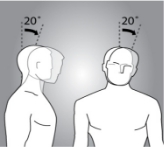
| Figure 13 
|
Bending the back or head backwards more than 5 degrees or looking up | Figure 14 
|
Twisting the back or neck more than 20 degrees | Figure 15 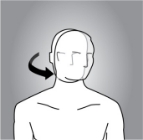
| Figure 16 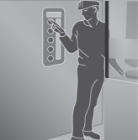
|
Working with one or both hands above shoulder height | Figure 17 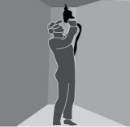
|
Reaching forward or sideways more than 30cm from the body | Figure 18 
| Figure 19 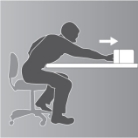
|
Reaching behind the body | Figure 20 
|
Standing with most of the body’s weight on one leg | Figure 21 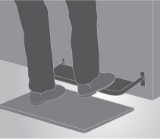
|
Twisting, turning, grabbing, picking or wringing actions with the fingers, hands or arms that includes excessive bending of the wrist | Figure 22 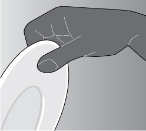
|
Working with the fingers close together or wide apart | Figure 23 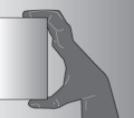
|
Squatting, kneeling, crawling, lying, semi-lying or jumping. | Figure 24 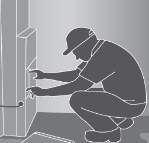
|
Very fast movements, for example packing bottles from a fast moving process line. | Figure 25 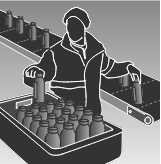
|
| | | |
The risk increases as the degree of bending and twisting increases. The risk is greatest when the postures and movements are extreme, that is, toward the end of the movement range, and when they feel uncomfortable for the worker.
Question 2: Does the task involve long duration?
If you have assessed a task as involving postures, movements or forces that are also repetitive (more than two per minute) and/or sustained (held for more than 30 seconds), you should determine the duration of the task.
The duration of the task is how long the task is carried out over a whole shift or continually at any time during a shift. Tasks that continue over a long period or are repeated over the work day increase the risk of injury.
As a general guideline, long duration means the task is done for more than a total of 2 hours over a whole shift or continuously for more than 30 minutes at a time.
Keep in mind that workers may use the same parts of the body to repeat similar movements when carrying out various tasks that are similar in nature over time.
Question 3: Does the task involve high or sudden force?
High forces can cause MSDs even if they are not repetitive or sustained. This means that any task involving high force may be a risk, even if it is only done occasionally or for short periods. The longer and more often force is applied and the higher the force, the greater the risk.
The risk in tasks involving high force is related to:
- the intensity of the force needed - forceful muscular exertions place high stress on the muscles, tendons, joints, ligaments and vertebral discs.
- the speed involved - fast movements (particularly if repeated) can injure muscles, tendons and ligaments. The rapid or sudden speed changes caused by sudden or unexpected movements are high risk.
- whether the force is jerky or sudden - forces suddenly applied or stopped can overload the muscles, tendons, joints, ligaments and vertebral discs. This can occur when throwing or catching loads, or when the load or item worked on moves unexpectedly (for example, when pulling up a fence post that suddenly comes free, or assisting and holding a walking patient who suddenly falls).
High and sudden forces are commonly associated with the handling of live persons or animals and loads that are unstable, unbalanced or difficult to hold.
Question 4: Does the task involve vibration?
Prolonged exposure to whole-body or hand-arm vibration increases the risk of MSDs and other health problems. The degree of risk increases as the duration of exposure increases and when the amplitude of vibration is high.
Some examples of sources of vibration are:
- driving, particularly on rough roads
- frequent or prolonged use of hand powered tools
- use of machines or tools where the manufacturer’s handbook warns of vibration
- workers being jolted or continuously shaken
- use of a vehicle or tool not suitable for the environment or task.
Question 5: Is there a risk?
The task involves a risk of MSD if you have answered ‘yes’ to either:
- Question 1 and Question 2
| The task involves repetitive or sustained postures, movements or forces, and it involves long duration. |
| The task involves high force or sudden force. |
| The task involves vibration |
A task may involve more than one risk factor. Where a number of risk factors are present and interact within a task, the risk of MSD increases significantly.
3.4 What are the sources of the risk?
When conducting the assessment, think about the sources of any risks that are present in the task. These will be the things that you may be able to change to eliminate or reduce the risk of MSD. For example, poor postures and movements may be due to the layout of the workplace, high forces may be due to the loads being handled, and the frequency and duration of the task may be due to the work organisation, limited staff numbers or increased work pace to meet tight deadlines.
The main sources of risk are:
- work area design and layout
- the nature, size, weight or number of things handled in performing the manual task,
- systems of work
- the environment in which the manual task is performed.
These sources of risk can also make the task more difficult to perform and therefore increase the risk of MSD.
For each risk factor, you should ask:
- where in the task are they occurring
- why each of these actions is occurring (source of the risk).
The answers to these questions will provide the information on how to fix the source of the risk and hence control the risk of MSD.
Consider the work area design and layout
A work area includes work benches, conveyors, furniture and fittings and the equipment used by workers doing that job. The positioning and relationship of the different elements in a work area to each other and to the worker are important because of the effect on working postures.
A work area that is designed without consideration of the risks that arise from hazardous manual tasks may impose awkward postures on workers undertaking manual tasks, for example, bent and twisted positions with shoulders raised and the need to reach for items or carry loads over long distances.
Consider the nature, size, weight or number of persons, animals or things handled
Loads
Loads can be a source of risk due to the amount of muscular effort needed to handle them. The harder to grip and control a person, animal or thing, the greater the force required to handle them.
The risk can arise from:
- size, shape and weight of load – loads that are large, bulky, or heavy and cannot be held close to the body or are asymmetric and put uneven forces on the spine
- loads that are difficult to grip through unsuitable handles, handholds or surface textures
- unstable or unwieldy loads can create sudden high muscle forces and result in overloading of muscles, tendons or discs
- handling people or animals – both the physical and behavioural nature of people or animals can be a source of risk, for example unpredictable movements requiring sudden forces to control.
Tools
Tools that are unsuitable for the task can be a source of risk by increasing the force required, or by promoting sustained or awkward postures. Risks can arise from:
Weight – heavy hand tools, particularly if held for long periods of time, increase the force and effort required to perform a task, for example, a 3kg power drill used on an assembly line.
Balance – if the heaviest part of the tool is in front of the wrist, the force required to grip the tool and stop it tilting forward is increased.
Handle design – if the handle diameter is too large or too small, the grip span of the hand will create awkward postures and greater force will be required to control the tool. A handle that is too short or has prominent edges, can result in damaging compression of the palm.
Handle orientation – if the handle design does not place the wrist in a handshake position, the worker will need to use an awkward posture to operate the tool. Tools that cannot be adapted for use by both hands or are designed for right-handed use only can result in awkward postures and increased force.
Shock loading and impact – tools that deliver impacts such as hammers, hammer drills, and nail guns transmit impact forces to various ligaments and can require the use of a firmer grip to maintain control. They are a particular source of risk if used repetitively and for long periods.
Prolonged use – continued use of any hand tool (even tools that are well suited to the user and designed for the task) without adequate time to recover will increase risk of injury due to the sustained force to support it. In particular, vibrating tools increase risk.
Maintenance – poorly maintained or irregular service of tools and equipment may increase the effort needed to use them. For example, an unsharpened knife will increase the force required to bone and slice meat.
Consider the systems of work
Systems of work, or the way work is organised, can influence the physical and mental demands that a manual task places on a worker. The fatigue and strain (physical and mental) that may arise from the aspects of work (task demands, task control and resources and support provided) bring on physiological responses such as increased muscular tension and affect the function of muscles, nerves and blood vessels, increasing the risk of the worker developing an MSD.
The sources of risk include:
- time constraints
- pace and flow of work across the working day or shift
- ability for workers to influence workload or work methods and changes in the workplace
- the level of resources and guidance
- consultation processes
- work roles and performance requirements or processes for dealing with conflicts
- staffing levels, skill mix and shift arrangements.
Remember that workers will also have different physical and psychological characteristics and these individual factors may increase the risk, for example:
- Skills and experience – being inexperienced in a job may increase the risk
- Physical characteristics – an overload situation may result from a mismatch between the worker and the task
- Unaccustomed work – workers who are new, have transferred from another job or are returning from extended leave and whose muscles are not conditioned to the work.
Consider the workplace environment
The sources of risk in the work environment include:
- Cold environments such as in cool rooms, freezers, cold stores or working outside in cold and/or wet weather can lower body and hand temperature and make handling and gripping objects more difficult. Increased grip force can also result from reduced sensitivity in cold hands or from wearing gloves. Cold can also significantly increase the risk of hand-arm vibration. Working in a cold environment requires thick or heavy protective clothing that restricts movement which can increase the risk of MSD. It can also cause overheating of the body as the clothing does not allow heat or sweat to dissipate and may decrease the blood flow to muscles, increasing fatigue.
- High temperatures - (including radiant heat), for example, in foundries, laundries, bakeries, kitchens, or working in hot weather can make handling and gripping objects more difficult. Workers may have difficulty grasping objects due to perspiration on the hands or there may be sudden or unexpected forces due to loads slipping.
- Humid environments - caused by processes such as steam cleaning, cooking or the weather can also increase the risk of developing MSD. Handling wet or damp objects may require increased force. Humidity may also increase discomfort and fatigue.
- Wind - may increase the force required to handle items and reduce control while handling large objects, especially those that are flexible and have a large surface area. When working in windy conditions and in low temperatures that are also windy, the resultant wind chill may lower the body temperature further.
- Slippery and uneven floor surfaces - may increase the exertion required to perform manual tasks due to difficulty maintaining stability. Unsuitable floor coverings (for example carpet) may increase friction when moving objects such as trolleys
- Obstructions – caused by poor housekeeping and cleaning can lead to awkward postures such as reaching or bending over obstacles
- Lighting - low or high levels of lighting, as well as glare and reflection, may lead to awkward or sustained postures to either improve vision or to avoid glare.
Now you know which risk factors are present, where they are present and why they are present (sources of the risk), you are in a position to know what must be controlled and work out how to
do it.
The ways of controlling the risk of MSDs are ranked from the highest level of protection and reliability to the lowest. This ranking is known as the hierarchy of risk control. The WHS Regulations require duty holders to work through this hierarchy to choose the control that most effectively eliminates or minimises the risk in the circumstances. This may involve a single control measure or a combination of two or more different controls.
Eliminate the risk
The most effective control measure involves eliminating the hazardous manual task and its associated risk. Eliminating hazards and risks is usually easier and cheaper to achieve in the planning or design stage of an item, process or place used for work.
Minimise the risk
If it is not reasonably practicable to eliminate the risk, then you must minimise the risks so far as
is reasonably practicable by:
- substituting the hazard with something that gives rise to a lesser risk
- isolating the hazard from any person exposed to it
- implementing engineering controls.
If there is a remaining risk, it must be minimised so far as is reasonably practicable by implementing administrative controls, and if a risk still remains, then suitable personal protective equipment must be provided and used. These two types of control measures, when used on their own, tend to be least effective in minimising risks because they rely on human behaviour and supervision.
Control measures should be aimed at eliminating or minimising the frequency, magnitude and duration of movements, forces and postures by changing the source of risk: the work area, tool, load, environment, method of handling and/or the way work is organised.
Hierarchy of control | Examples of control measures |
Level 1 | Elimination | - Automate the manual task (such as using remote controls)
- Deliver goods directly to the point of use to eliminate multiple handling
|
Level 2 | Substitution | - Replace heavy items with those that are lighter, smaller and/or easier to handle
- Replace hand tools with power tools to reduce the level of force required to do the task
|
Isolation | - Isolate vibrating machinery from the user, for example by providing fully independent seating on mobile plant
|
Engineering | - Use mechanical lifting aids
- Provide workstations that are height adjustable
|
Level 3 | Administrative | - Rotate workers between different tasks
- Train workers to use control measures implemented when carrying out manual tasks
|
Personal protective equipment | - Heat resistant gloves for handling hot items
- Shock absorbent shoes for work on hard concrete floors
|
Before purchasing equipment, such as tools, containers, workstations, machinery and vehicles, you should always check whether the item has been designed so that it can be used safely and best matches the needs of your workers. Where possible, you should:
- brief designers and engineers so that consideration can be given to the design implications
on the manual tasks performed - liaise with manufacturers and suppliers about handling, delivery and storage requirements
- purchase ergonomically designed tools and equipment that suit the work being carried out
and the physical characteristics of the workers - check any vibration specifications.
A well-designed work area will assist in eliminating or reducing the risk factors associated with
a hazardous manual task, such as the degree of reaching, twisting or bending.
Workstation design
Where it is not possible to provide adjustable workstations consider altering the design so that:
- the workstation height suits the widest range of physical characteristics of workers
- reaching distances suit shorter workers
- knee and leg clearances suit larger workers.
Working heights
Tasks with high visual demands should be performed above elbow height and work surfaces may need to be tilted, for example, for tasks involving delicate or precise manipulation.
Tasks where the hands make a narrow range of movements and can rest on the work surface should be performed at, or just above, elbow height. A sloping surface may reduce the amount of neck flexion required to perform desk-based tasks, such as drafting.
Light manipulative tasks or tasks involving the use of a keyboard should be performed at just below elbow height.
Tasks incorporating a range of arm movements using the shoulder should be performed at between hip and shoulder height, for example taking items from a stack and placing them on
a conveyor.
Tasks requiring considerable muscular effort or use of the body for leverage, for example, drilling at a workbench, should be performed at hip height and no higher.
Where possible, place items used in manual tasks so they are:
- in front of the worker
- between waist and shoulder height
- close to the midline of workers and orientated towards the worker
- on the worker’s preferred side
- positioned within comfortable reaching distance
- positioned to avoid double handling and to avoid moving loads manually over long distances.
Displays and controls should be positioned to encourage comfortable head and neck postures, comfortable hand and arm reach and efficient use. You should:
- place frequently used displays and controls, including keyboards and other input devices, directly in front of the worker
- position controls at comfortable elbow height
- select electronic or foot controls rather than hand controls if high force is required
- place pedals so that workers can operate them from a comfortable seated position.
Working position
Workers should not remain in a seated, standing or otherwise static posture for prolonged periods. Design the workstation to provide opportunities for workers performing seated or standing tasks to vary their postures and movements
For seated tasks, seating should have the following features:
- adjustable seat height and angle
- a contoured backrest with a lumbar curve except those where the backrest would interfere with the actions to be performed
- a swivel action to prevent the worker from twisting to reach workstation components
- rounded seat edges
- a five-point base with casters to allow movement on carpet, and gliders fitted to the base for low-resistance flooring, where access to work items located beyond normal reach is required
- a footrest or foot ring fitted on drafting or higher chairs to support the feet.
A seated work position is best for:
- work that requires fine manipulation, accurate control or placement of small objects
- close visual work that requires prolonged attention
- work that involves operating a foot pedal.
Workers carrying out standing tasks should be provided with:
- a chair, stool or support so that the worker can alternate between sitting and standing
- a footrest (large enough for the whole foot) to allow the worker to stand with either foot raised
- where possible, suitable floor covering to cushion concrete and other hard floors.
A standing work position is best when:
- large, heavy or bulky loads are handled
- forceful movements are required
- reaching is required
- movements away from the working position are frequent
- there is no knee room
- there is limited space.
Work space
Work areas should have enough space to accommodate the number of workers and other people involved in the task, any equipment that might be required and space to operate the equipment safely. For example, when observing workers of an aged care facility assisting an infirm person to bathe, the bathroom may need to accommodate two workers, the client and a mobile hoist with space to manoeuvre a person in the hoist over the toilet and bath or into a shower area.
Handling loads
Examples of control measures that should be considered when handling loads include:
- purchasing products in smaller loads for manual handling or larger loads to be shifted mechanically
- reducing the size or capacity of containers
- using handheld hooks or suction pads to move loads such as sheet materials
- using grip devices adapted to the particular object to be carried. (Figure 26)
Figure 26 Use handling grip devices adapted to the particular object to be carried
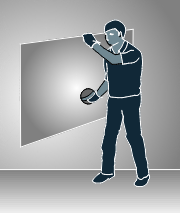
Tools and equipment
Hand tools should be designed to:
- be held in a neutral wrist or handshake position (Figure 27)
- allow the hand to retain a comfortable grip span
- be well-balanced (the heaviest part of the tool needs to be behind the wrist)
- be suitable for use by either hand
- provide a good grip surface
- prevent a worker from adopting a pinch grip with high force or for prolonged periods.
Minimise the level of muscular effort, particularly of the shoulder and wrist, needed to use hand tools by:
- using power tools where possible
- suspending or supporting heavy tools where they are used repetitively and in the same place
- counterbalancing heavy tools that are used repetitively and need to be kept away from the body
- using trigger locks where the grip has to be sustained for more than 30 seconds
- holding the work piece in place with either jigs or fixtures selecting tools that produce the least amount of vibration
- reducing impact shocks
- limiting torque or ‘kick back’ reactions.
Maintenance
Tools and equipment should be well maintained by carrying out regular inspections and servicing in accordance with the manufacturer’s specifications.
Figure 27 Select tools that can be held with a neutral wrist or in a handshake position with the hand adopting a comfortable (not too open or too closed) grip. Orient jigs and fixtures holding the workpiece so that the wrist does not have to bend.

Excessive bending of the wrist is required to use this tool.
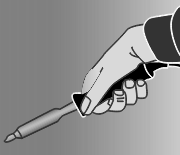
Modifying the tool eliminates the awkward wrist posture

Figure 28 Select tools that are suited to the task, such as long handled saws when pruning trees.

The heaviest part of this brush cutter is located behind the wrists and the weight is supported by a harness.
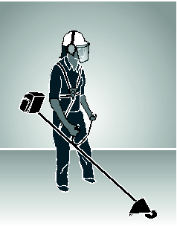
An overhead suspension system reduces the forces required to use the iron.
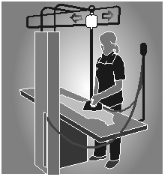
Mechanical equipment may eliminate or reduce the need for workers to lift, carry or support items, animals or people. A wide range of mechanical aids is available for various industries, for example: (Figure 29-31)
- conveyors such as roller conveyors, elevating conveyors, belt conveyors, screw conveyors, chutes, monorails or trolley conveyors
- cranes such as overhead travelling cranes, gantry cranes or jib cranes, stacker cranes, industrial manipulators and articulating arms
- lifting hoists
- loading dock levellers
- turntables
- springs or gas struts, mechanical devices such as hand winches, hydraulic pumps, and battery powered motors
- forklifts, platforms trucks, tractor-trailer trains, tugs and pallet trucks
- lift tables, mechanical and hand stackers, lift trolleys, two-wheel elevating hand trucks, and vacuum or magnet assisted lifters
- glass panel, duct and plaster lifters.
Figure 29 Example of lift table
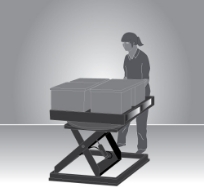
Figure 30 Mechanical lifter hand to lift people
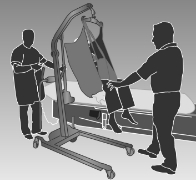
Figure 31 Using mechanical equipment, such as overhead cranes to lift
and move very heavy objects eliminates the need to apply high force.
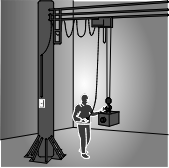
A vacuum operated lifting device can reduce the forces, awkward postures,
and movements required to manually load products onto pallets.
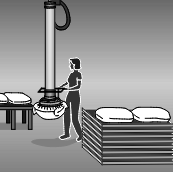
A self-adjusting base in the laundry tubs reduces the need for bending,
twisting and reaching during unloading
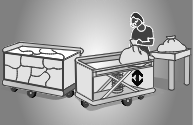
Mechanical aids should be:
- designed to suit the load and the work being done
- as light as their function will allow
- adjustable to accommodate a range of users
- easy to use
- suited to the environment in which the task is performed
- located close to the work area so they are readily available but do not cause an obstruction
- supported by a maintenance program to ensure they are safe and that the required effort to use them is kept at the lowest possible level
- introduced with suitable instruction and training in their use.
When you introduce a mechanical aid into the workplace, you must provide adequate information, instruction, training and supervision to ensure that new arrangements do not introduce any additional risks to workers, for example, a forklift operated in the same workspace used by other workers.
Pushing and pulling loads
Pushing loads is preferable to pulling because it involves less work by the muscles of the lower back, allows maximum use of body weight, less awkward postures and generally allows workers to adopt a forward facing posture, providing better vision in the direction of travel.
Reduce the effort required to start the load in motion by:
- using motorised push/pull equipment such as tugs or electric pallet jacks
- using slide sheets to reduce friction when moving patients
- positioning trolleys with wheels in the direction of travel
- using large power muscles of the legs and whole body momentum to initiate the push or pull of a load.
Reduce the effort to keep the load moving by:
- using motorised hand trucks and trolleys that are as lightly constructed as possible and have large wheels or castors that are sized correctly and roll freely
- using hand trucks or trolleys that have vertical handles, or handles at a height of approximately one metre
- ensuring that hand trucks and trolleys are well maintained
- treating surfaces to reduce resistance when sliding loads
- for pushing, ensuring handles allow the hands to be positioned above waist height and with elbows bent close to the body
- for pulling, ensuring handles allow the hands to be positioned below waist height allowing workers to adopt a standing position rather than being seated so the whole body can be used.
Reduce the effort needed to stop the load by:
- indicating the place where loads need to be delivered
- planning the flow of work
- encouraging workers to slow down gradually
- fitting brakes and speed limiters so speed can be controlled, particularly if there is a need to stop quickly so as to avoid other traffic.
Figure 32 A trolley can eliminate many of the risks involved in manual handling, however,
the load will still need to be manoeuvered onto the trolley and through the workplace.
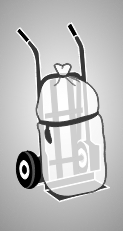
Handling people
No worker should fully lift a person (other than a small infant) unaided, that is without assistance from, for example, mechanical aids, assistive devices or another worker. All people handling activities are a potential source of injury and the risks associated with this hazardous manual task must be eliminated or minimised so far as is reasonably practicable.
With people handling, the health and safety of the person being handled needs to be considered as well as the health and safety of the worker/s and others involved in the task. The physical condition of the person being handled as well as their non-physical characteristics, for example their ability to understand and communicate and their behaviour, will affect how the people handling activity is undertaken and the risks involved.
When people are being handled, the controls selected should take into account all of the sources of risks. Controls may include the following:
- a mobility risk assessment: maximise the person’s ability to assist in the move through the use of appropriate advice, mechanical and/or assistive devices.
- moving the person to a place that does not constrain the movement of the worker performing the task, for example, using a shower trolley to bathe a patient
- where handling is required, assessing the needs of the task including the specific type of mechanical aids and personnel needed, and planning it in a manner that avoids the hazardous manual task
- where the use of a hoist requires two or more people provide adequate supervision and resources to eliminate the risk of workers being under time pressure and attempting the task on their own
- planning how to handle a person attached to medical or other equipment
- ensuring the location and storage of mechanical aids and assistive devices allows easy access
- providing training for the safe use of mechanical aids and assistive devices.
Handling animals
Supporting or restraining animals should only be carried out by people with the necessary skills and experience. When animals are being handled consider the following:
- using mechanical devices or other restraining aids for lifting, transporting or restraining animals
- moving the animal to a place that constrains or minimises the movement of the animal before commencing the task
- where handling is required, assessing the needs of the task including the specific type of mechanical aids and personnel, and planning it in a manner that avoids double-handling
- where the use of a mechanical aid or assistive device requires two or more people, providing adequate resources so that workers under time pressure don’t try to complete the task on their own.
Workload and pace of work
The workload and pace should accommodate the physical demands of the manual task. Where possible, work should be organised to minimise multiple handling and improve the flow of work by:
- having raw materials delivered, located or transferred mechanically to the location or work area where they will be used. For example, building supplies can be delivered by truck or crane to the on-site location where they will be used or to the external lift, rather than being delivered to the front gate
- delivering materials, tools and items on mobile systems, for example, on roller pallets
- processing and packaging items in the same location or on the same workbench
- locating storage areas close to distribution areas
- changing the distribution of work across the work day or week to avoid high peak workloads
- using systems that minimise the need for storage and additional handling
- asking suppliers to deliver products, items or tools in a way that allows them to be used without the need for additional handling, for example, flat packs delivered on a vertical frame or table tops facing the right way up for use.
Workers should not have to work at a rate that is at the limit of their ability. When you establish a work rate, you should consult with the workers affected and their health and safety representatives. Set realistic work rates by:
- allowing workers to control the pace for critical or physically demanding tasks
- providing adjustability in the line speed, for example, reduce the speed when conditions are altered, such as when new products are introduced or poor quality materials are used
- providing buffers to allow material to be taken off-line, for example, ‘holding’ bins or benches off the main processing conveyor.
Figure 33 The work rate for high volume production and processing
should not extend workers to their physical limits.
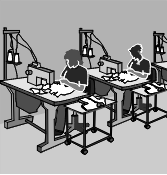
Design tasks for the working population
Task design should take account of the range of human dimensions and capabilities such as height, reach and weight. Adapt work systems to accommodate the health/fitness status of a worker. If this is not reasonably practicable, allocate the worker to other tasks. In designing work systems, considerations also include:
- the capacity of workers who have not reached physical maturity for physically demanding work
- the possibility that older workers may have a decreased physical capacity for physically demanding or fast work
- the need for gradual adjustment to physically demanding work activities during recovery from injury or illness
- pregnancy which affects the risk of back pain because of the changing shape of the body.
Provide transition arrangements for workers undertaking unaccustomed work by:
- reducing the pace of work or workloads
- providing more frequent breaks
- job rotation.
Resources and support
When introducing risk control measures that involve plant, tools or equipment, ensure that:
- it is the right equipment for the task
- there is sufficient, available equipment
- plant, tools and equipment are checked and maintained on a regular basis.
To allow for adequate recovery time and to reduce exposure to risks of MSD, arrange to have the right staffing levels, skill mix and shift arrangements considering:
- shift lengths
- the levels of overtime
- placement of rostered days off
- the numbers of workers during peak periods
Communicate and consult with workers about the way work is organised and allow workers to seek assistance from another person when necessary.
Vibration
Whole-body vibration – the design of vibration damped equipment and engine mountings are the most effective methods of controlling vibration exposure. Other strategies to reduce exposure include:
- improving vehicle suspension and installation of operator seats mounted on suspension systems which incorporate spring and damper elements
- ensuring that equipment and control measures implemented to reduce vibration are well maintained
- ensuring workers adjust their seats appropriately and equipment is operated within the speed suggested by the manufacturer or to a speed that reduces vibration levels
- training workers about the risks associated with whole-body vibration, the controls that have been implemented and how they should be used.
Hand-arm vibration – substitute alternative manufacturing methods or processes to eliminate the need for vibrating equipment. Where this is not possible, the best strategy is to purchase tools and equipment that produce less vibration.
Cold conditions
To control exposure to cold conditions you should:
- ensure your workers take regular rest breaks in a warm place
- ensure your workers wear non-slip footwear and clothing that is fitted and not too bulky or restrictive
- provide personal protective equipment suitable for the task (for example, gloves to provide protection from the cold and also allow a good grip of the objects being handled).
Heat and humidity
For workers in hot and humid conditions, reduce temperature and humidity during manual tasks where possible by:
- relocating work away from sources of heat
- providing fans or air-conditioning
- using screens, awnings and clothing to shield workers from radiant heat sources such as ovens, furnaces and the sun
- enclosing hot processes and increasing ventilation
- altering work schedules so that work is done at cooler times
- providing a cool, well-ventilated area where workers can take rest breaks
- ensuring that workers work at a sensible pace
- providing a supply of cool drinking water.
Windy conditions
Consider minimising the risk of exposure to windy conditions by:
- planning the route of work through protected pathways
- using vehicles to transport items in outdoor conditions
- co-ordinating tasks during low wind conditions.
Floors and surfaces
Keeping work areas clean, tidy and free of clutter or obstacles prevents workers from adopting awkward postures and reduces the level of exertion that may be required to reach over or around obstacles. Clean, smooth and flat surfaces can also reduce forces required to push and pull objects and prevent slips, trips and falls.
Lighting
Select lighting to suit the task performed. To prevent awkward or sustained postures that may arise from low or excessive levels of lighting, glare or reflection:
- provide additional lighting, such as a lamp on a movable arm, where required
- improve the layout of existing lights by lowering or raising them or changing their position in the work area
- increase or decrease the number of lights
- change the diffusers or reflectors on existing lights
- change the lights to improve light levels or improve colour perception
- change the orientation or position of the item to avoid shadows, glare or reflections
- clean lights and light fittings regularly
- use screens, visors, shields, hoods, curtains, blinds or external louvers to reduce reflections, shadows and glare
- control natural light sources (particularly bright sunshine) on work pieces, screens and work surfaces by orientation and placement at 90 degrees to the source and/or by providing screening and louvers.
Administrative control measures do not address the risk factors or source of the risk – they only attempt to reduce risk by reducing exposure to those risk factors.
Job rotation
The risk of MSDs may be minimised by rotating staff between different tasks to increase task variety. Job rotation requires the tasks to be sufficiently different to ensure that different muscle groups are used in different ways so they have a chance to recover. To increase task variety, you should consider:
- combining two or more tasks so both are done by one worker and alter the workstation and items used accordingly
- providing breaks doing another task when the job is monotonous.
Rest breaks
Regular rest breaks provide opportunities for workers to prevent the build-up of, or recover from the effects of, fatigue in muscle groups used during hazardous manual tasks that involve:
- repetitive awkward postures or sustained postures
- application of high force
- vibration
- long duration
- high levels of mental demand combined with hazardous manual tasks, for example inspection work.
The frequency and duration of rest breaks will be dependent on the nature of the task. Generally, the greater the force required, or the longer a posture is sustained, the greater the recovery time.
More frequent and shorter rest breaks are better for rest and recovery than fewer, longer breaks. Build short breaks into task rotation arrangements where work is of a similar nature, for example process production or hand tool use. Micro-pauses (very short intermittent breaks) in physical activity are also beneficial. Build these into the design of tasks and methods of work, for example:
- workers put down hand tools or release them (suspension) between operations
- keyboard operators remove hands from keyboards during natural keying breaks
- stagger manual tasks over the full work shift.
Team handling
Team handling is manual handling of a load by two or more workers. Team handling brings its own risks and requires coordination. It should only be used as an interim control measure. You should redesign manual tasks to allow the use of mechanical equipment, or eliminate the need to lift, if there is a regular need for team handling. Team lifting can increase the risk of MSD if:
- the load is not shared equally
- workers do not exert force simultaneously
- individual workers need to make foot or hand adjustments to accommodate other team members, reducing the force each can exert
- performed on steps or on a slope where most of the weight will be borne by handlers at the lower end
- individual workers unexpectedly lose their grip, increasing or changing the balance of the load on other team members.
Whenever team handling is used it is essential to match workers, co-ordinate and carefully plan the lift. You should ensure that:
- the number of workers in the team is in proportion to the weight of the load and the difficulty of the lift
- one person is appointed to plan and take charge of the operation
- enough space is available for the handlers to manoeuvre as a group
- team members are of similar height and capability, where possible
- team members know their responsibilities during the lift
- training in team lifting has been provided and the lift rehearsed, including what to do in case of an emergency
- aids to assist with handling (a stretcher, slings, straps, lifting bars, lifting tongs, trolleys, hoists) are used where possible and training is provided in their use.
Information, training and instruction
If a risk of MSDs remains after implementing higher level control measures, then the risk must be minimised by providing information, training and instruction. Training in lifting techniques must not be used as the sole or primary means to control the risk of MSDs.
Risk control may initially involve using short term, interim measures while a long term solution is developed. For example, temporarily raise the bench until it can be replaced or altered permanently, or rotate employees through a production line to reduce the time spent working at a low bench until it can be changed.
To implement the most effective risk controls, you should:
- allow workers to trial solutions before decisions are made to make the solution permanent
- review controls after an initial testing period, as they may need modification
- develop work procedures to ensure that controls are understood and responsibilities are clear
- communicate the reasons for the change to workers and others
- provide training to ensure workers can implement the risk controls for the task competently
- ensure that any equipment used in the manual task is properly maintained.
You should not make final decisions on the effectiveness of the control measures that you have implemented until enough time has passed for your workers to adjust to the changes. Workers should be given a chance to practice using the new workstation, tool, mechanical device or new work method. Some modifications may require workers to use new muscle groups or different parts of the body and they may initially feel some discomfort. At this stage, you should frequently check with your workers how they feel the improvements are working.
Training
Training in the type of control measures implemented should be provided during induction into a new job and as part of an on-going manual task risk control program. Training should be provided to:
- workers required to carry out, supervise or manage hazardous manual tasks
- in-house designers, engineers and officers responsible for the selection and maintenance of plant and/or the design and organisation of the job/task
- any health and safety representatives.
The training should include information on:
- manual task risk management, including the characteristics of hazardous manual tasks
- specific manual task risks and the measures in place to control them
- how to perform manual tasks safely, including the use of mechanical aids, tools, equipment and safe work procedures
- how to report a problem or maintenance issues.
You should review your training program regularly and also when there is change to work processes, plant or equipment, implementation of new control measures, relevant legislation or other issues that may impact on the way the task is performed.
You should keep records of induction and training given to your workers. The records can include information such as the date of the session, the topics dealt with, and the name and signature of the trainer and each of the workers who attended the session.
Control measures that have been implemented must be reviewed and, if necessary, revised to make sure they work as planned and to maintain a work environment that is without risks to health and safety.
Regulation 38: A person conducting a business or undertaking must review and as necessary revise risk control measures:
- when the control measure does not minimise the risk so far as is reasonably practicable
- before a change at the workplace that is likely to give rise to a new or different health and safety risk that the control measure may not effectively control
- if a new hazard or risk is identified
- if the results of consultation indicate that a review is necessary
- if a health and safety representative requests a review.
Control measures may be reviewed using the same methods as the initial hazard identification step. Consult your workers involved in the manual task and their health and safety representatives and consider the following:
- Are the control measures working effectively in both their design and operation, without creating new risks?
- Are workers actively involved in the risk management process? Are they openly raising health and safety concerns and reporting problems promptly?
- Have new work methods or new equipment reduced physical strain or difficulty?
- Has instruction and training on hazardous manual tasks and the implemented control measures been successful?
- Is the frequency and severity of MSDs reducing over time?
- Is an alteration planned to any structure, plant or process that is likely to result in a worker being exposed to a hazardous manual task?
- Has an incident occurred as a result of a worker being exposed to a hazardous manual task?
- If new information becomes available, does it indicate current controls may no longer be the most effective?
If problems are found, go back through the risk management steps, review your information and make further decisions about risk control.
The best time to eliminate or minimise the risk of MSDs is in the design and planning stage – when hazards and risks can be ‘designed out’ before they are introduced into a workplace.
Designers, manufacturers, importers and suppliers of plant and structures have duties under the WHS Act to ensure, so far as is reasonably practicable, that these products are without risks to health and safety when used for a purpose for which they were designed or manufactured.
Regulation 61: Designers of plant or structures used for work must:
- ensure the plant or structure is designed to eliminate the need to carry out a hazardous manual task in connection with the plant or structure
- where this is not reasonably practicable, minimise the need to carry out a hazardous manual task in connection with the plant or structure so far as is reasonably practicable
- give each person who is provided with the design for the purpose of giving effect to it adequate information about the features of the plant or structure that eliminate or minimise the need for any hazardous manual task to be carried out.
Ergonomic principles should be applied in the design stage. This means that a manual task should be designed to fit the people doing the task, not the reverse. Ergonomics involves consideration of the variability in human capability and an understanding of how people interact with the work environment, tools and equipment.
If you provide your design to another person (for example, a manufacturer) then you must provide certain information, including:
- the purpose for which the plant or structure was designed
- how you have dealt with hazards that may impact on manual tasks in your design, and whether there are any residual risks
- how to handle the product safely, including during its transportation, installation, operation, maintenance and disposal.
Quality assurance processes can be used to check that the product effectively minimises the risk of MSDs. When modifying a design, take into account feedback from purchasers and users of your product.
Design of workplaces
Designers of buildings used as workplaces should consider the manual tasks that may be performed throughout the lifecycle of the building, from construction through to use, maintenance, refurbishment and potential demolition. For example, design:
- building materials that are strong yet light-weight
- large structural components with suitable lifting points to enable lifting by crane
- spaces large enough to accommodate or incorporate mechanical devices
- minimal distances for pushing, pulling, lifting or carrying loads
- materials handling devices into the building, such as lifts and chutes
- floor surfaces to enable wheeled equipment to be pushed or pulled easily.
Some types of workplaces, such as hospitals, nursing homes, warehouses and distribution centres that carry out a high level of manual tasks will have particular design requirements to eliminate or minimise the risk of MSDs.
Design of plant
The safe design of plant can play a critical role in reducing the risk of MSD for workers. When designing plant, consider all phases of its life, including manufacture, cleaning and servicing.
If practicable, trial a prototype in a range of operating conditions and think about how the plant will be used. Change any aspects of the design that increase the risk of injury, for example:
- eliminate or reduce the number of repetitive actions, postures and movements required to operate the plant
- design handles on tools and controls to allow normal wrist postures
- reduce the forces required to operate the plant
- provide instructions, signs or symbols to help people use the plant properly
- take into account the range of physical characteristics of those who use the plant, such as size and strength
- ensure that the plant operates at a speed or rate that would suit most users
- ensure that regular maintenance points are easily accessible.
Appendix E lists some examples of design-related MSD risks for plant, and shows how to control the risks through safe design.
Regulation 61: Manufacturers of plant or structures must:
- ensure the plant or structure is manufactured designed to eliminate the need to carry out a hazardous manual task in connection with the plant or structure
- where this is not reasonably practicable, minimise the need to carry out a hazardous manual task in connection with the plant or structure so far as is reasonably practicable
- give each person to whom the manufacturer provides the plant or structure adequate information about the features of the plant or structure that eliminate or minimise the need for any hazardous manual task to be carried out.
Importers and suppliers must take all reasonable steps to obtain that information the designer or manufacture is required to give and provide it to any person to whom the plant or structure is supplied.
Manufacturers, importers and suppliers should consider the way their products are packaged and delivered to workplaces to eliminate or minimise the risk of MSDs, for example:
- provide lifting aids or lifting points so mechanical aids can be used
- provide two handles or handholds to prevent one-handed lifting, particularly where the load is heavy or needs to be moved frequently
- repackage the load into a different weight, size or shape:
- Large and bulky loads are difficult to handle, promote awkward postures, increased muscular exertion and are difficult to hold close to the body
- Heavy loads generally require greater force to handle.
- Loads that are unwieldy, unstable or move unpredictably increase risk by creating sudden high forces
- label loads to indicate any MSD risks, and where appropriate, any necessary precautions when handling the load
- deliver goods in sturdy boxes or containers with handles or handholds. Handholds on cardboard boxes should be reinforced so that it does not rip when the box is picked up.
Packaged items should be arranged so the package is well balanced and the contents will not shift unexpectedly while being handled, for example:
- use slings or other aids to maintain effective control when handling loads that lack rigidity
- fill containers holding liquids or free-moving powder so that there is only a small amount of free space at the top of individual containers
- use baffles, dividers or packing materials to keep the contents stable in partly-filled packages
- secure loads that may move during handling, for example animals in slings, fertiliser bags inside sturdy boxes
- shrink wrapping loads on pallets.
Providing information
Manufacturers, importers and suppliers must also give purchasers and users the information they need to use the product safely, including during its transportation, operation and maintenance.
This information may be provided in user manuals, brochures or on the product itself (for example, labelling cartons). The information should be accurate, clear and easy to understand.
Loads should be labelled to indicate any MSD risks, and where appropriate, any necessary precautions when handling the load. This information should indicate:
- the heaviest side of an off-centred load, for example, with an arrow drawn on the packing carton
- the weight of the load
- whether the load is fragile
- the stability of the load, for example a label saying that the contents of a package may move while being transported or handled
- any specific handling or unpacking instructions.
Information provided by the designer to the manufacturer should be passed on to the supplier and then to the purchaser. Importers should obtain the information from their suppliers.
If you are an importer or a supplier and you cannot get this information from the designer or manufacturer, you should obtain information from other sources or develop it yourself.
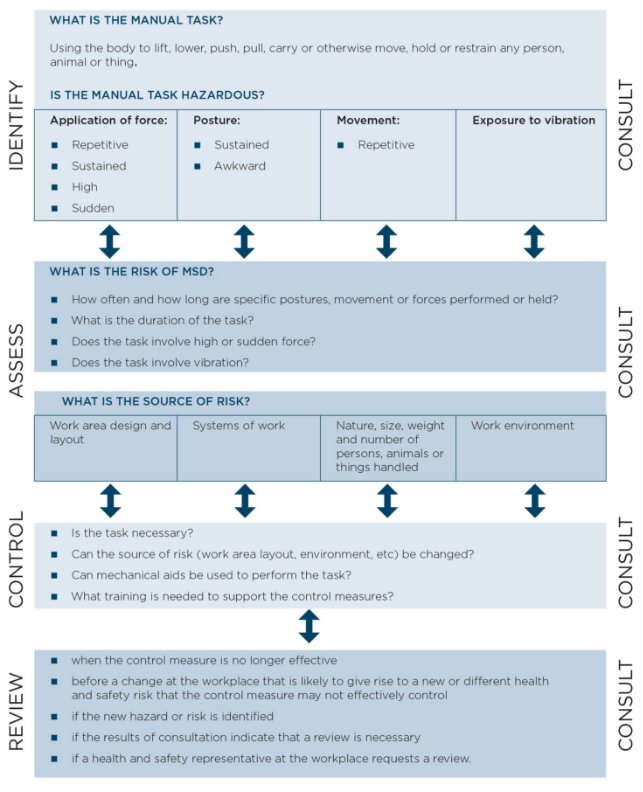
![]()








































